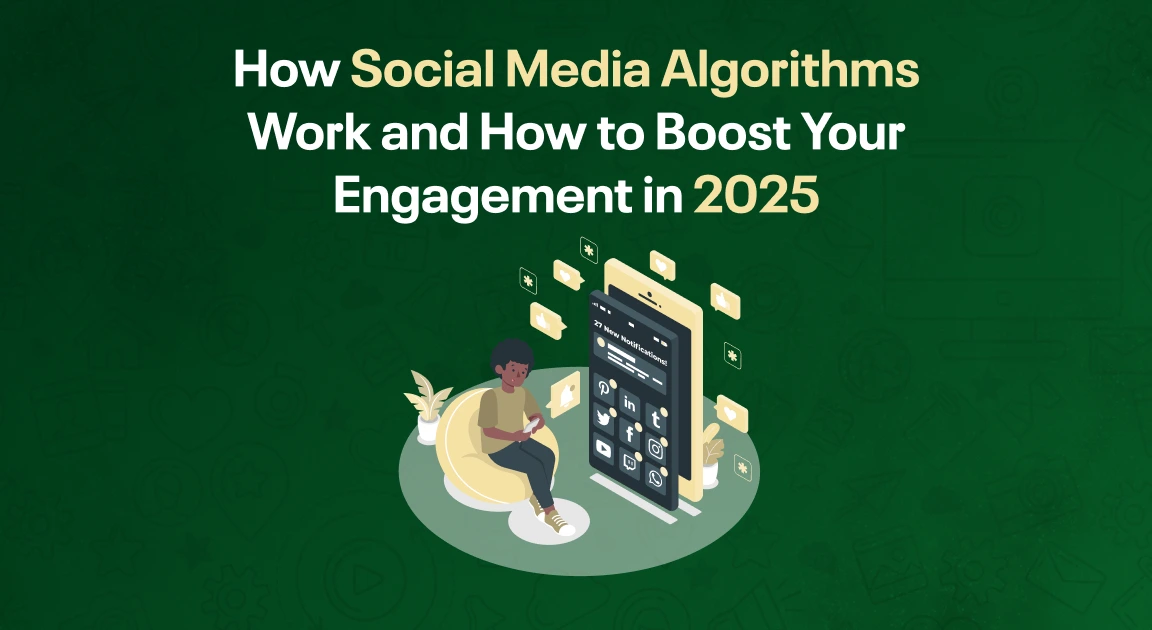A few years ago, if you were scrolling through your social media feed, you probably didn’t think much about how those posts ended up there.
You just saw the memes, videos, and photos you liked—and maybe some you didn’t.
But now, you might wonder, “How did this content land on my screen?”
And more importantly, how can I make sure my content gets the same attention?
Well, there’s a hidden force behind all that magic—and it’s called social media algorithms.
These algorithms work like an invisible hand, guiding what shows up on your feed based on what you interact with most.
Social media algorithms are always evolving, getting smarter, and sometimes more complicated than we’d like.
You can learn to work with them instead of against them.
Understanding how social media algorithms work is the key to getting your content in front of the right people.
Once you crack the code, you’ll see how much potential there is to boost your reach and engagement.
And don’t worry, you don’t need to be a tech genius to figure this out.
By the end, you’ll know how to fine-tune your social media strategy, boost organic reach, and use content algorithms to your advantage.
Let’s break it down and explore how you can make these algorithms work for you.
What Is a Social Media Algorithms?

Ever notice how your social media feed seems to know exactly what you want to see?
One minute, you’re liking a post about coffee, and the next thing you know, your feed is full of espresso machines and latte art. That’s not luck—it’s the algorithm at work.
A social media algorithms is a system that decides what content shows up on your feed. It looks at what you engage with—likes, comments, shares—and then pushes more of that kind of content your way.
Think of it like a DJ at a party. If people keep dancing when a certain type of music plays, the DJ will keep playing more of it.
If a song clears the dance floor, they’ll switch it up. Algorithms do the same thing, except with posts instead of music.
How Social Media Algorithms Decide What You See

Without algorithms, scrolling through social media would feel like flipping through random TV channels with no guide.
You’d see a mix of everything—some stuff you care about, a lot you don’t. That’s why platforms prioritize posts based on what they think will hold your attention.
For example, if you regularly comment on travel photos, Instagram’s algorithm will serve you more posts about exotic destinations.
On TikTok, the For You Page doesn’t just show videos from people you follow—it suggests content similar to what you’ve already watched and engaged with. The goal? Keep you scrolling as long as possible.
Why Social Media Algorithms Matter

If every post was shown in the exact order it was published, with no filtering.
Your favorite creator’s update might get buried under hundreds of posts from people you barely interact with.
That’s why social media algorithms exist—they make sure the most relevant content reaches the right people.
1. Helping Users Find What They Like
Every time you open an app, there are thousands of posts competing for your attention. Social media algorithms act as a filter, sorting through the chaos and picking what they think you’ll enjoy most.
It’s the reason your best friend’s posts show up first while that random guy from high school barely appears in your feed.
Boosting Business Visibility
For businesses, this filtering is a game-changer. A well-optimized post can reach way more people than just your followers.
If your content gets strong engagement, the social media algorithms will show it to a wider audience—even users who don’t follow you yet.
This is why creating engaging posts is so important. The more people interact with your content, the more platforms will push it forward.
How Social Media Algorithms Work

Social media platforms don’t show posts in the order they’re published. Instead, they use algorithms to decide what appears in your feed.
These social media algorithms analyze your activity—what you like, comment on, and share—to show you more of what they think you’ll enjoy.
Each platform has its own way of ranking content, but they all focus on the same key factors:
1. Engagement Signals
Posts with high engagement (likes, comments, shares, and saves) are more likely to appear at the top of your feed.
The more people interact with a post, the more the platform believes it’s worth showing to others.
2. Freshness
Newer content often gets priority, especially on platforms like Twitter (X) and Instagram. However, older posts can still gain traction if they continue receiving engagement.
3. Relevance
The social media algorithms track your interests based on what you interact with. If you often engage with travel content, you’ll see more posts about vacations, hotels, and destinations.
4. Content Format
Certain types of content get better visibility. For example, short-form videos on TikTok and Instagram Reels tend to perform better than static images or text-based posts.
5. User Behavior
The more you interact with a specific account, the more their posts will show up in your feed. Social media platforms prioritize showing content from accounts you engage with frequently.
How Different Social Media Platforms Rank Contents
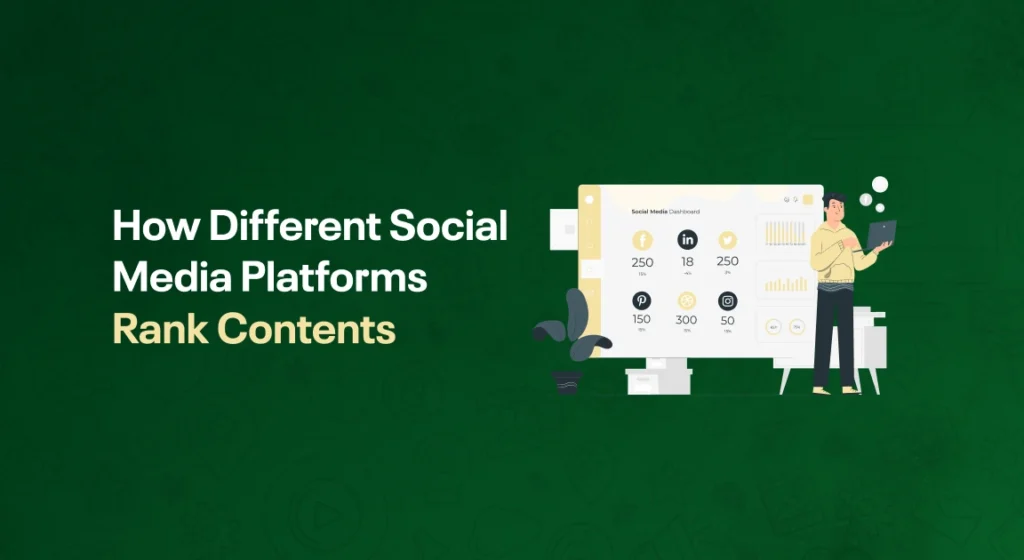
Gone are the days when social media was as simple as posting a photo and waiting for your friends to see it.
Now, every platform has its own complex algorithm working behind the scenes, deciding which content gets seen and which gets buried.
The rules are often hidden, but understanding them can make a huge difference in how far your posts reach.
If you know what each platform’s algorithm values, you can craft your content to get noticed—and maybe even go viral.
Instead of fighting these algorithms, it’s time to play by their rules. Here’s a breakdown of how Facebook, Instagram, TikTok, LinkedIn, Twitter (X), and YouTube rank content, and how you can use that to your advantage.
Facebook: Prioritizes Engagement

Facebook’s algorithm has evolved significantly. The platform no longer shows your posts to all of your followers.
Instead, it prioritizes content that generates engagement—the more likes, comments, and shares your posts get, the more Facebook will promote it to a larger audience.
Facebook cares deeply about the quality of engagement as well. Posts that spark meaningful conversations or generate more time spent interacting are more likely to be promoted.
Facebook also looks at the timing of engagement. If your post receives quick interactions within the first hour, it signals to Facebook that your content is valuable, and it will push it to more users.
If your post doesn’t get enough interaction quickly, it gets buried in the newsfeed.
How to Get Facebook’s Algorithm to Work for You
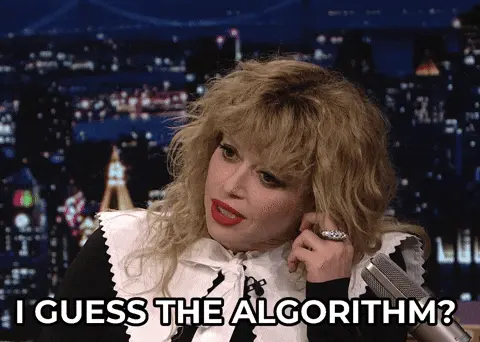
1. Start Conversations: Facebook loves posts that spark meaningful discussions. A question or open-ended prompt encourages people to comment and interact, which is what the algorithm craves.
Example: A local bakery posts, “What’s the best dessert of all time? Let’s debate!” The comments will start rolling in, which signals Facebook to show the post to more users.
2. Get People to Share: Shares are a huge signal to Facebook that your post is valuable. When people share your content, it tells the algorithm that it’s worth spreading to a wider audience.
Example: A nonprofit posting a touching story about a rescued animal and asking users to share it with friends will increase its reach dramatically.
3. Use Facebook Groups: Content posted within active Facebook Groups is given more weight than posts shared on personal pages. This is because Facebook’s social media algorithms knows Group posts are likely to have a highly engaged audience.
Example: A real estate agent posting tips in a local Facebook Group will see much more engagement than posting the same content on their personal page.
Instagram Ranking Factor: Reels are the Priority
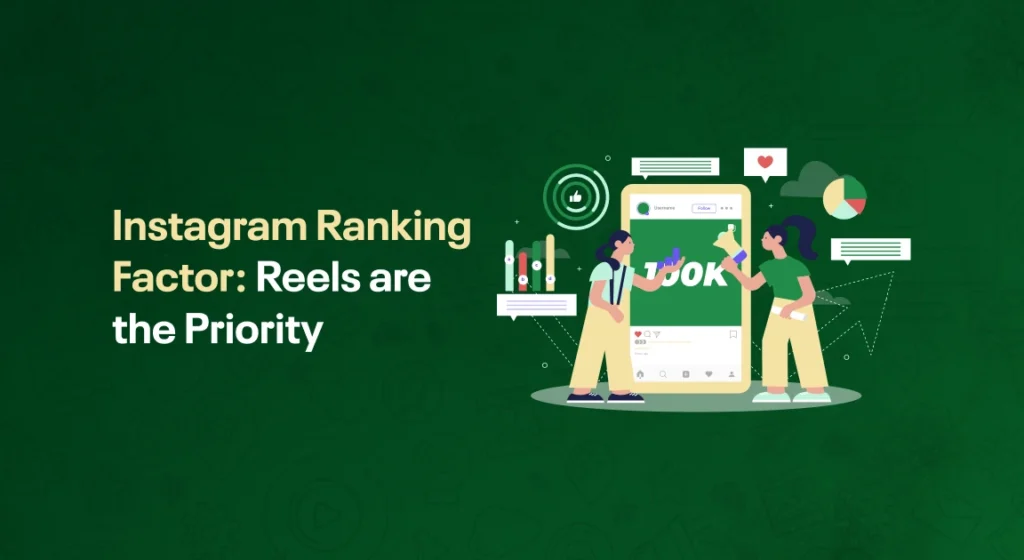
Instagram’s social media algorithms is focused on keeping users engaged on the platform as long as possible. To do that, Instagram prioritizes Reels, which are short, engaging videos.
Instagram is betting big on video content, and the algorithm rewards users who create video-based content. Engagement plays a major role, with saves, shares, and comments driving higher visibility.
Instagram also values time spent on the platform, so the longer users stay engaged with your content—whether through watching videos, liking, or commenting—the better the social media algorithms will rank it.
How to Get More Reach on Instagram
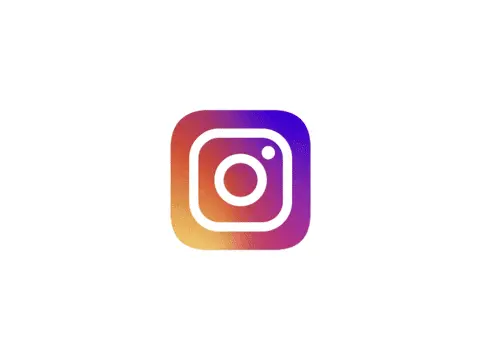
1. Post More Reels: Reels are currently Instagram’s top priority. Videos keep people scrolling, and the algorithm is designed to push these types of posts to more users.
Example: A fitness coach sharing a “Quick Home Workout” reel that gets saved and rewatched is more likely to appear in more feeds because of its high engagement.
2. Encourage Saves & Shares: Saves are considered more valuable than likes on Instagram because it signals that users find your content worthy of revisiting.
Example: A fashion blogger posting a “Fall Outfit Guide” and asking followers to save it for future reference will see a boost in visibility.
3. Leverage DMs: When people share your post via DMs, Instagram sees it as a highly engaging action. This boosts the reach and visibility of your content.
Example: A local restaurant posts, “Tag a friend who loves burgers!” The more DMs generated, the higher Instagram will rank the post.
TikTok Ranking Factor: Watch Time Drives Visibility

TikTok’s social media algorithms doesn’t care how many followers you have—it’s all about watch time. If users watch your video from start to finish, and even better, rewatch it, TikTok considers it high-quality content.
The TikTok social media algorithms also places a lot of importance on the first few seconds of your video, so you have a very small window to grab attention.
TikTok also rewards content that uses trending sounds or effects, as these are likely to keep users engaged.
How to Make TikTok’s Algorithm Work for You
1. Hook People in the First 3 Seconds: If you don’t grab attention quickly, people will scroll past. Focus on creating an eye-catching, engaging opening to hook viewers immediately.
Example: A skincare brand starts with, “STOP! You need to see this if you have acne,” which encourages users to stay and watch the full video.
2. Use Trending Sounds: TikTok’s algorithm boosts content that uses popular sounds or effects. By hopping on trending sounds, you can dramatically increase your reach.
Example: A travel blogger shares a video of a scenic spot while using a trending song, instantly increasing the likelihood of the video going viral.
3. Make People Rewatch: Videos that are rewatched multiple times are ranked higher. This means creating content that encourages users to watch again.
Example: A chef shares a “Secret Pasta Recipe” but reveals the key ingredient at the very end. Viewers rewatch to catch the final reveal.
LinkedIn Ranking Factor: Authority and Expertise
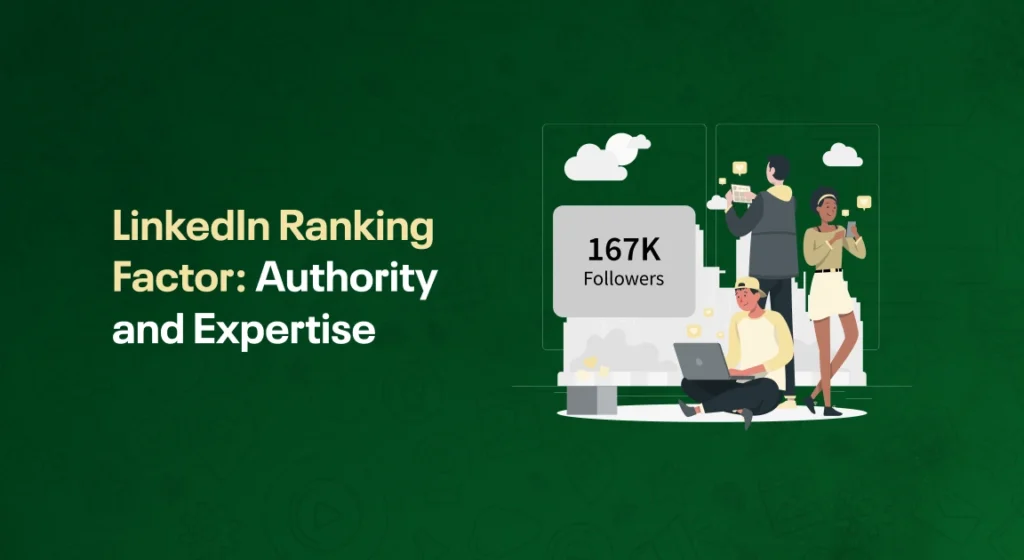
LinkedIn’s algorithm places a high value on expertise and professional authority. The platform rewards in-depth, thought-provoking posts that demonstrate knowledge within a specific field.
It prioritizes long-form content that sparks discussions and debates, especially in the professional world.
LinkedIn also favors engagement from connections, with more interaction resulting in greater visibility. The algorithm pushes content that generates meaningful and intelligent conversations.
How to Get More LinkedIn Visibility

1. Write Long-Form Posts: LinkedIn’s algorithm favors long-form content that provides in-depth insights or advice.
Example: A marketing expert shares a post titled “5 Mistakes I Made in My First Year of Business—and How You Can Avoid Them.” Posts like these get more engagement and, in turn, more reach.
2. Encourage Thoughtful Comments: Avoid generic comments. Posts that encourage deep discussion tend to get more visibility.
Example: A career coach posts, “Is a college degree really necessary for success? Let’s discuss.” This sparks a thoughtful debate, boosting the post’s reach.
3. Use LinkedIn Carousels: Multi-slide posts, or carousels, are promoted by the algorithm due to their ability to keep users engaged.
Example: A financial advisor shares a carousel titled “The Ultimate Budgeting Guide,” which encourages users to swipe through each slide, improving engagement.
Twitter (X) Ranking Factor: Speed and Engagement
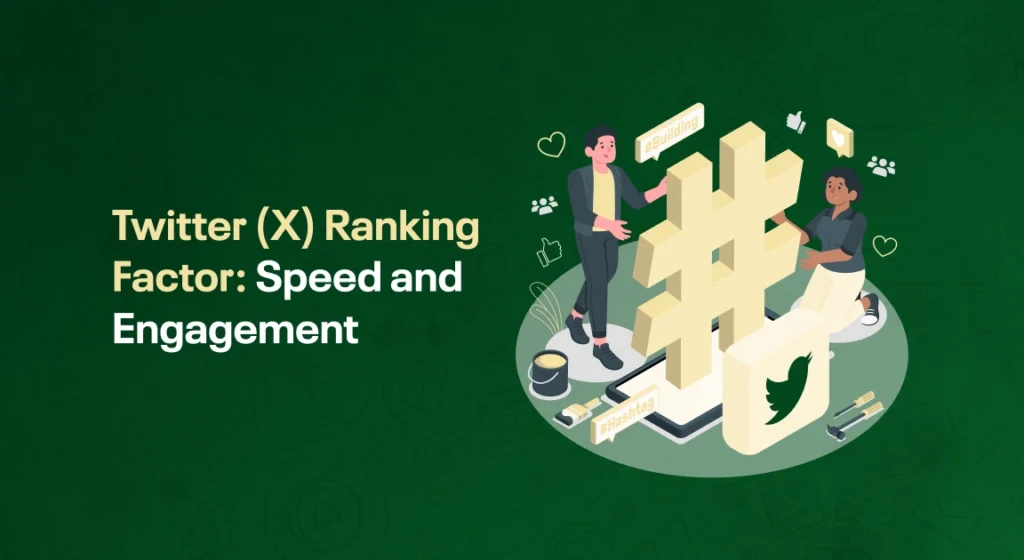
Twitter’s algorithm is focused on recency and engagement. Tweets that generate significant interaction in the first 30 minutes are more likely to be shown to others.
The algorithm also favors quote tweets and threads, which encourage further engagement.
How to Win on Twitter (X)

1. Jump on Trends FAST: Twitter’s algorithm pushes tweets that tap into trending topics in real time.
Example: A tech blogger tweets, “Apple just dropped a game-changing update—here’s why it matters.” This timely tweet will get more engagement.
2. Encourage Quote Tweets: Twitter loves quote tweets because they create more engagement.
Example: A sports analyst tweets, “Who’s the best basketball player of all time? Quote tweet with your pick.” This will drive engagement, helping the tweet reach more people.
3. Use Thread Posts: Long-form content in the form of threads is promoted by Twitter’s algorithm.
Example: A startup founder posts a 10-tweet thread titled “Everything I Wish I Knew Before Launching My First Business.” Every tweet in the thread boosts engagement.
YouTube Ranking Factor: Watch Time and Click-Through Rate
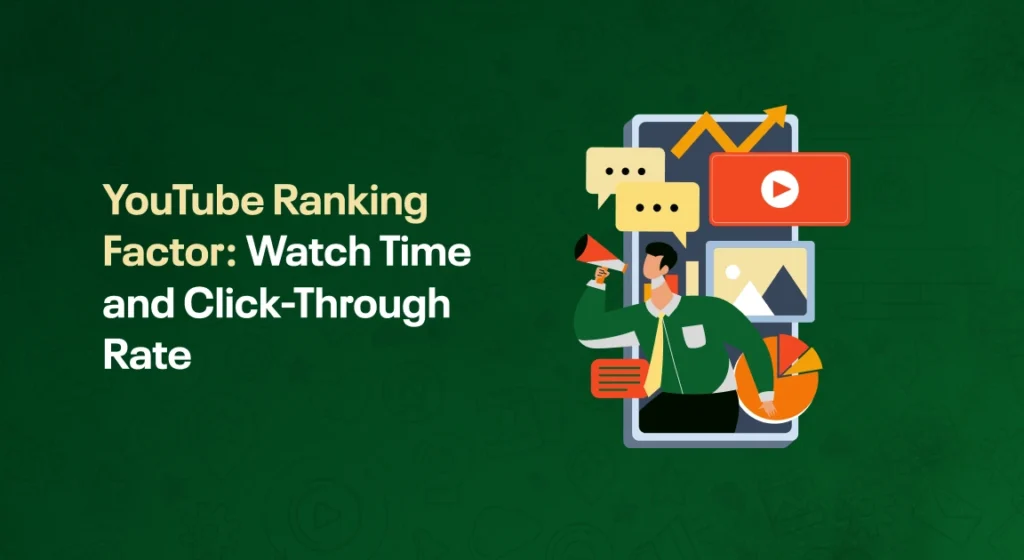
YouTube’s algorithm prioritizes watch time (how long people watch a video) and click-through rate (how many people click on your video after seeing the thumbnail).
If your video gets clicks and keeps people watching until the end, YouTube will promote it to more people.
How to Rank Higher on YouTube
1. Make Killer Thumbnails & Titles: If your thumbnail doesn’t entice people to click, your video won’t perform well. A strong click-through rate is crucial for ranking.
Example: A gaming YouTuber titles their video, “I Tried the Hardest Game Ever. Here’s What Happened.” This piques curiosity and increases clicks.
2. Keep Viewers Watching: Watch time is king. The longer people watch your video, the more YouTube will promote it.
Example: A personal finance expert posts a video titled “How to Retire at 40” but saves the best advice for the last few minutes to keep viewers watching until the end.
3. Ask Viewers to Comment: More comments = more engagement. YouTube pushes videos with high engagement to a wider audience.
Example: A travel vlogger asks, “Which destination should I visit next? Drop a comment!” This drives comments, increasing the video’s reach.

